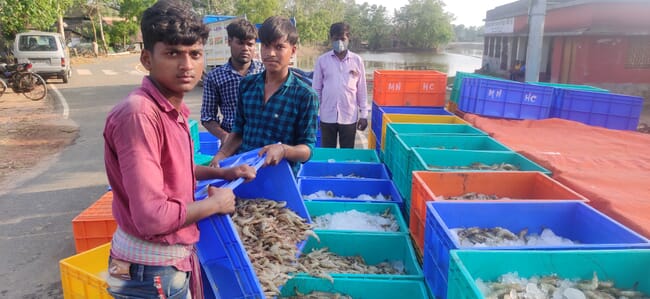
“Thailand is finding their place in the world again,” McIntosh explains, from his home in Bangkok. “We’re diversifying, so it’s not all export. There’s a good amount of domestic shrimp consumption – maybe 140,000 150,000 tonnes. And domestic always pays you 15 percent more than exports. That allows farmers to have a little bit less efficiency and still make money to keep them in business.”
The lesson, he says, is clear: exports alone can’t sustain a national industry, especially given the cutthroat nature of current global markets.
“When you’re an export market, you have to deal with really a lot of oversupply competition. In a domestic market, you don’t have that. It kind of reaches its own equilibrium that’s healthy for that area,” he explains.
McIntosh points to the example of Brazil – once Europe’s number-one shrimp supplier, disease outbreaks and currency shifts pushed the industry to pivot inward in the mid-2000s.
“After they lost the export market, they started developing the domestic market,” McIntosh recalls. “You started having whole restaurant chains devoted to shrimp. Consumption really picked up. And now Brazil is producing 140,000 to 150,000 tonnes and consuming it all. That’s a model for what other countries can do too.”
Mexico has also embraced its home market.
“The Mexicans are doing very well now,” McIntosh says. “They get paid a fair price for their production, they’re not trying to push that out in the export market. They’ve even taken steps to protect their market against unfair imports. That’s another example of a domestic market saving an industry.”
For India, with US tariffs currently exceeding 50 percent and Ecuador dominating with lower costs, McIntosh warns that relying on exports is increasingly dangerous.
“India has population, they have very low consumption, and there’s a lot of room for improvement if they can create distribution and presentation. Either that happens or you’re going to see a much weakened Indian industry,” he reflects.
As a result, he suggests that India must invest in the basics that Thailand and Brazil figured out: better retail presentation, wider distribution and making shrimp a staple of local dining.
As McIntosh puts it: “You can go from nothing and dependent on exports if you’re forced to. But if you’ve got a population, you’ve got an opportunity. India’s got the population – it just needs the domestic market to match.”



